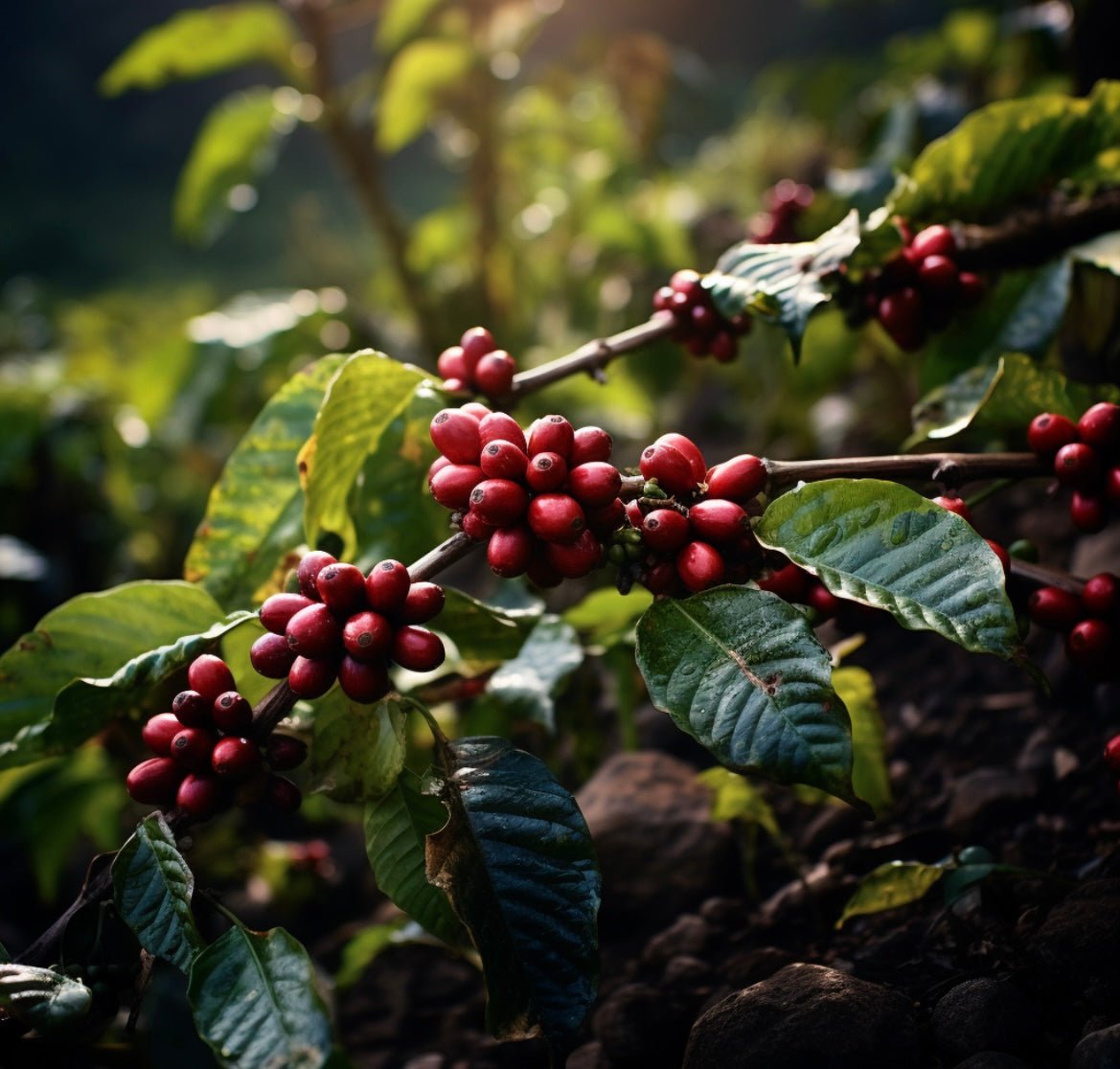WE MOVED!! WE APOLOGIZE THERE MAY BE A DELAY IN SHIPPING
The origin of coffee
June 29, 2023

As a coffee enthusiast, you may already know that the origin of your coffee beans plays a crucial role in determining the flavors and characteristics that grace your cup. If not, join us as we embark on an exploration of the fascinating relationship between altitude, climate, and the flavor profile of specialty coffee.
Altitude matters when it comes to coffee. Did you know that coffee go hand in hand, creating a fascinating interplay that shapes the beans' flavor profile? When the coffee cherries grow at higher altitudes, they undergo a slower maturation process. This extended development period allows the beans to accumulate more sugars, resulting in complex and well-defined flavors in the cup. In addition to flavor profile, the altitude affects the acidity and brightness. Coffee beans grown at higher altitudes tend to possess a higher acidity level, lending them a vibrant and lively character. This acidity can be experienced as citrusy, floral, or wine-like notes, adding brightness and complexity to the coffee's overall taste.
You may be wondering which altitude your favorite coffee is grown. While the flavor profiles vary across altitudes, there is often an optimal range known as the sweet spot for specialty coffee production. Typically, altitudes between 1,200 to 2,000 meters above sea level provide the right balance of acidity, sweetness, and nuanced flavors that coffee connoisseurs seek.
Climate has an influence on coffee and plays a significant role in shaping the flavors and characteristics of coffee beans. Let's explore the different climatic factors such as temperature, rainfall, the availability of water, and seasons and their impact on coffee.
Specific coffees thrive in specific temperature ranges, and different temperature profiles lead to distinctive flavor outcomes. Cooler climates often produce coffees with bright acidity, floral notes, and increased complexity, while warmer climates can yield more body and sweetness. Additionally, adequate rainfall and water availability are vital for coffee plant growth and bean development. The amount and distribution of rainfall throughout the year influences the coffee beans moisture content, density, and flavor. Drier regions may result in beans having more concentrated flavors, while wetter regions can contribute to a softer and milder flavor.
Coffee cherries undergo ripening cycles affected by seasonal changes. These variations influence the flavor profiles of the harvested beans. The distinctiveness of seasonal coffees, such as the brightness of a summer harvest or the richness of a winter crop, adds to the intrigue for coffee enthusiasts.
Now that we’ve covered how altitude and climate influence the flavor profile of coffee, let's talk about different coffee origins and their many flavor characteristics.
Ethiopia is widely recognized as the birthplace of coffee. Legend has it that coffee was discovered in the Ethiopian region of Kaffa, and its cultivation and consumption spread from there. The country has a rich coffee heritage and a long-standing tradition of coffee production. It is home to numerous coffee-growing regions, each offering its own unique flavor profiles and characteristics. Some well-known regions include Sidamo, Yirgacheffe, Harrar, and Limu, among others. Ethiopian coffees often showcase a range of vibrant flavors and distinctive tasting notes.
Ethiopia is famous for its naturally processed coffees, where the coffee cherries are dried with the fruit intact, infusing the beans with rich fruitiness and sweetness.
Ethiopian coffees are celebrated for their complex and diverse flavor profiles. They often exhibit bright acidity, floral aromas, and a wide array of tasting notes. Depending on the region and processing method, flavors can include fruity notes such as blueberry, strawberry, citrus, and tropical fruits, as well as floral, tea-like, and sometimes wine-like characteristics.
In Ethiopia, traditional coffee processing methods are still prevalent. One of the most notable methods is the "natural" or "dry" process, where the coffee cherries are dried on raised beds or patios with the fruit intact. This process allows the beans to absorb the sugars from the fruit, resulting in pronounced fruity flavors. Ethiopian coffees are also processed using the washed method, producing cleaner and brighter profiles.
When exploring Ethiopian coffees, consider trying single-origin offerings from different regions. We recommend the Ethiopian blend from Mahogany Queen found here.
Understanding the relationship between altitude, climate, and the flavor profile of specialty coffee allows you to appreciate the intricate nature of this beloved beverage even more. By delving into the power of altitude and climate, you gain insights into the factors that contribute to the unique characteristics found in each cup.
As you continue your coffee exploration, consider seeking out single-origin coffees that highlight specific altitudes and climates. This way, you can experience firsthand the fascinating range of flavors that emerge from different terroirs.
Remember, the world of specialty coffee is vast and ever-evolving, with countless origins to discover and savor. So, grab your favorite brewing equipment, take a sip, and let the flavors transport you to the lush mountains, sun-drenched valleys, and unique microclimates where each coffee bean finds its home.
Expand your coffee palate, share your newfound knowledge with fellow enthusiasts, and embark on a lifelong journey of unraveling the mysteries and pleasures that come with embracing the origins of specialty coffee.
Happy brewing, and may every cup be a delightful testament to the wonders of coffee's terroir!
Also in Coffee Confidential

Saving Money for Homeownership with Mahogany Queen Coffee
July 30, 2023

Cold Brew Coffee
July 04, 2023
Let's Collab

Policies
© 2024 Mahogany Queen. Mahogany Queen LLC Powered by Shopify
